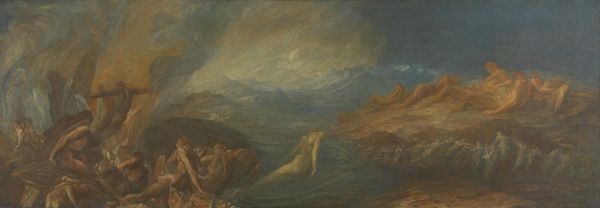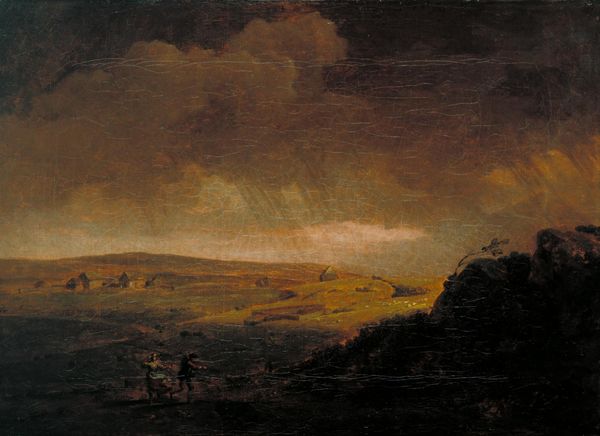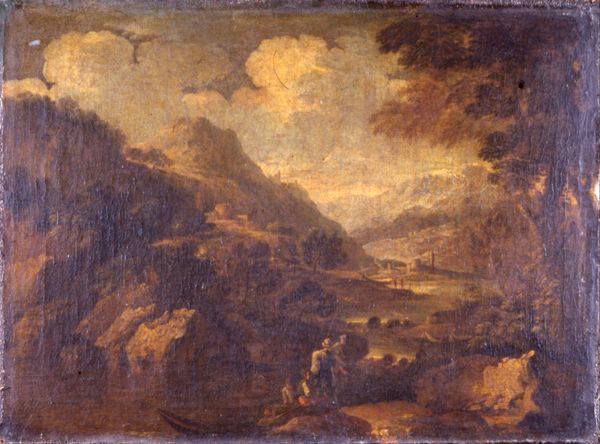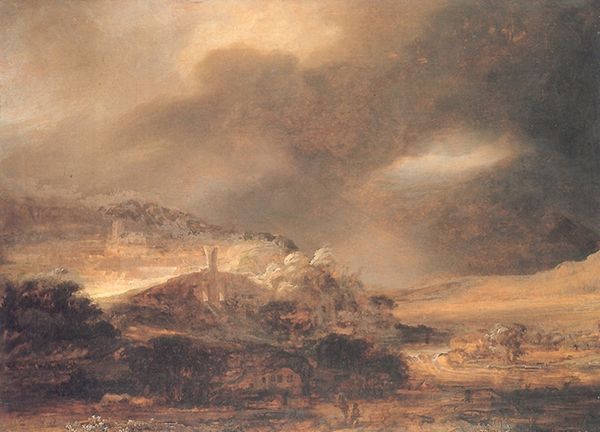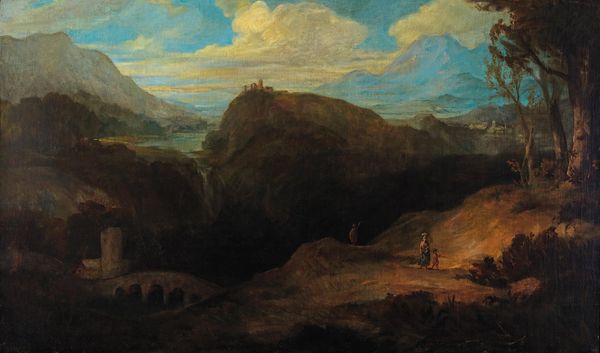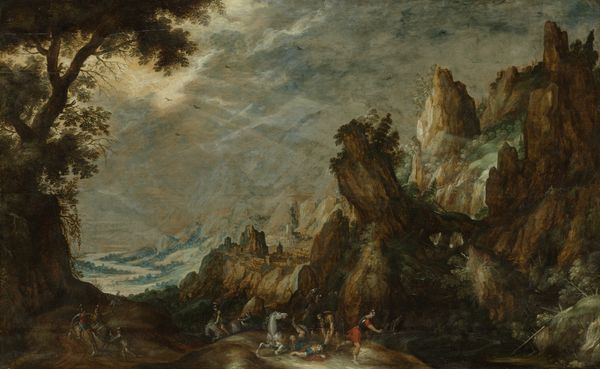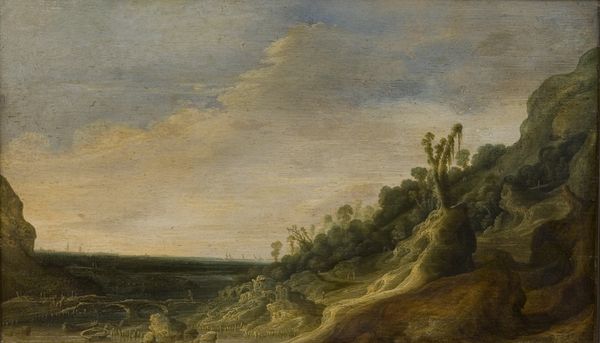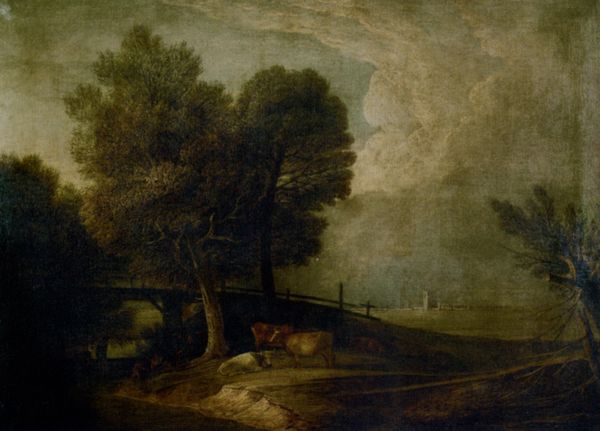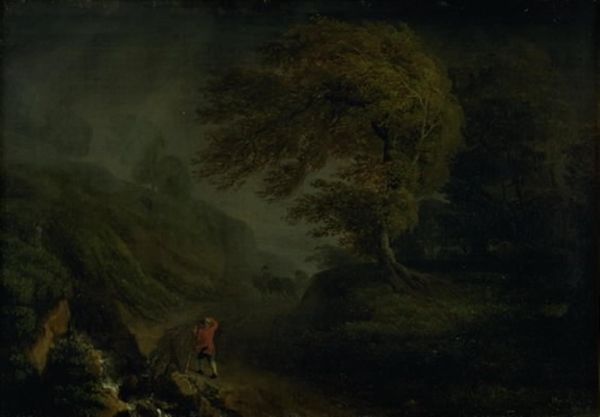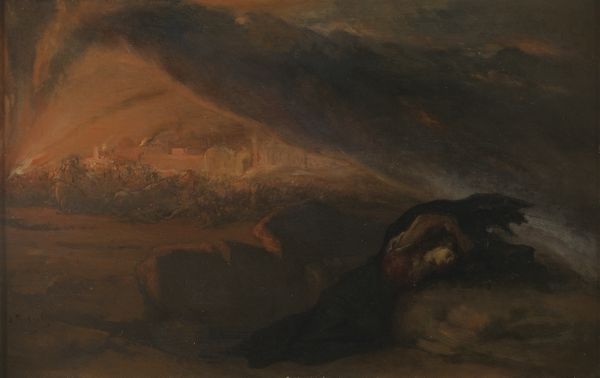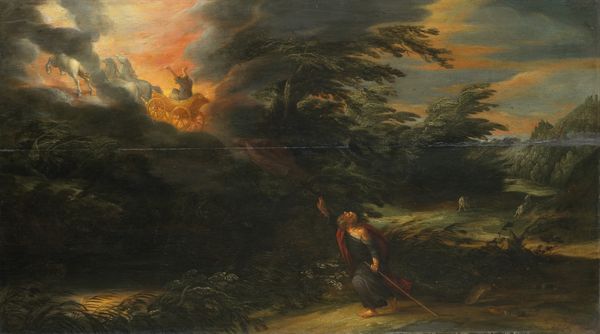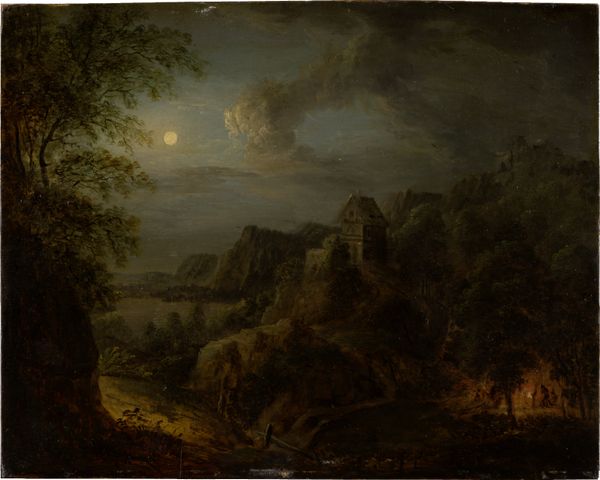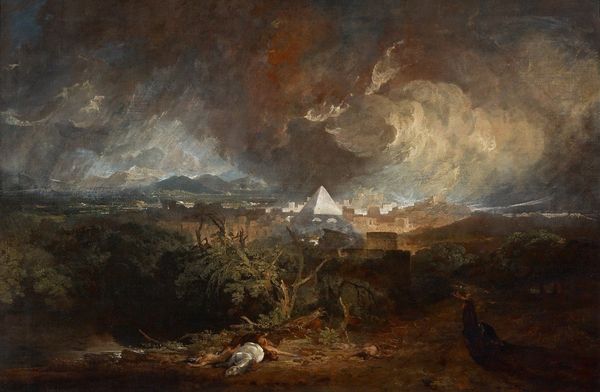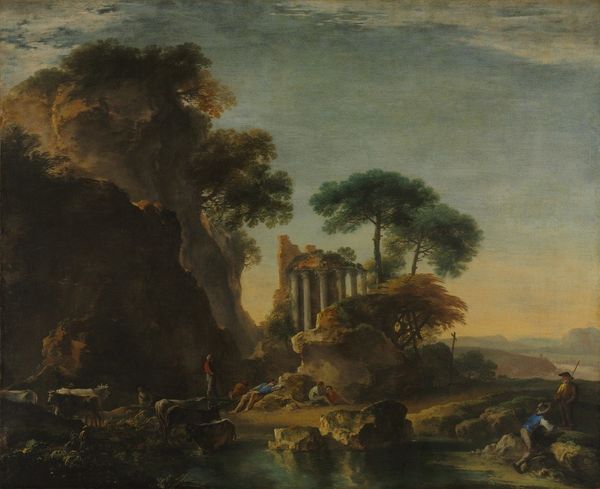
painting, oil-paint
#
allegory
#
painting
#
oil-paint
#
landscape
#
figuration
#
oil painting
#
romanticism
#
history-painting
Dimensions: overall: 92.6 x 123.7 cm (36 7/16 x 48 11/16 in.) framed: 124.1 x 154.9 x 10.1 cm (48 7/8 x 61 x 4 in.)
Copyright: National Gallery of Art: CC0 1.0
Curator: J.M.W. Turner's "The Rape of Proserpine," completed in 1839, really showcases his move toward mythological subject matter, viewed through a landscape lens. It's a darker subject than his usual seascapes. Editor: Dark, absolutely. The whole canvas is washed in a sort of infernal glow, all yellows and browns. There's a frenzied energy, chaos even. Are those figures tumbling down a ravine? Curator: Yes, Turner’s brushwork becomes incredibly expressive here. See how the oil paint almost dissolves into pure light? It's hard to make out distinct forms, but that adds to the terror and violence of the scene. This illustrates the myth of Hades abducting Proserpine to the underworld. Editor: The architecture in the background... It looks so small and insignificant against the scale of nature's drama. You'd almost miss it. And what’s with that skeletal tree reaching into the sky on the right? Curator: That building on the hill serves, in part, to mark a civilized point, a border being overtaken by the rush of abduction and the dominance of feeling, as represented in nature. The skeletal tree functions as a stark reminder of mortality, and possibly, hints at the desolate nature of the underworld Proserpine is being dragged into. Turner often used such motifs. He loved embedding symbols into his paintings. The "Rape of Proserpine" also allows an occasion for an historicising, mythologising landscape style, rather than an actual historic work. Editor: There is a historical framework. It all feels so emotionally charged. The lack of precise detail makes it more unsettling, somehow. You feel the violence of the myth more viscerally. It’s interesting how Turner grapples with these violent stories. Is he condemning the violence or glorying in it? Curator: That's always the question with Turner, isn’t it? I believe he’s depicting the raw power and chaos of the event, the overwhelming force of nature mirroring human passions. The painting challenges us to confront uncomfortable aspects of classical mythology. The drama in a way, is not necessarily located in history, as one might expect from the historical reference, but is presented in terms of landscape. Editor: It’s a difficult scene, brilliantly portrayed. It stays with you long after you’ve walked away from it. I wonder how audiences back then would have viewed something so intensely emotive. Curator: Absolutely. And in viewing the painting, you might take some time to think about landscape versus figure and whether this changes the reading you arrive at regarding rape in painting.
Comments
No comments
Be the first to comment and join the conversation on the ultimate creative platform.
